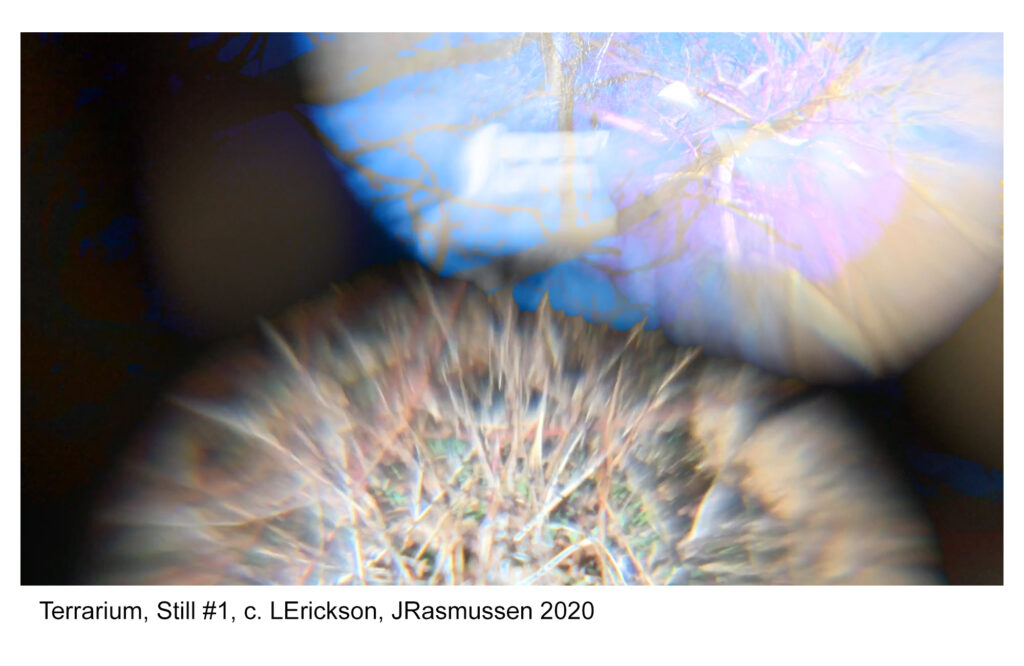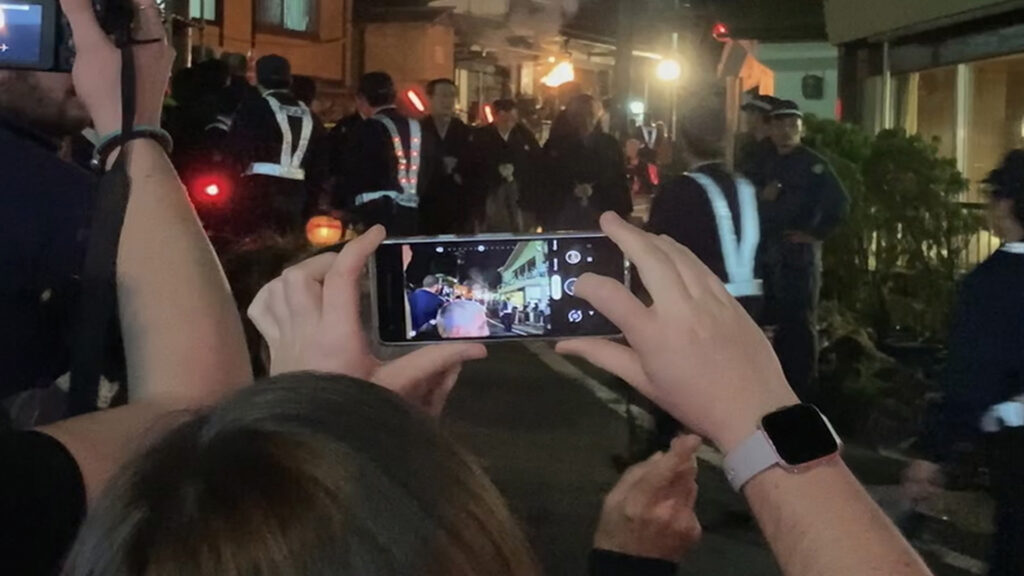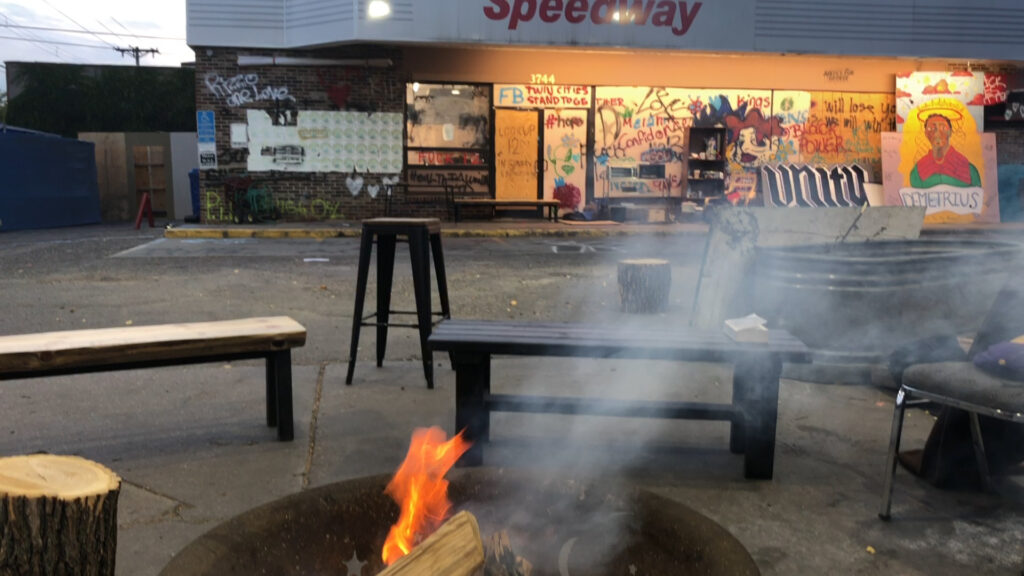Last week, the Schuylkill Center, as well as more than 1 billion people from almost 200 countries, united for Earth Day in the name of improving our planet. As this week of honor and appreciation closes, we are left to reflect how our actions, both large and small, individually and collectively, have an impact on the Earth and our common future. The art project Homegrown Stories explores our natural environment through the lenses of video and film that the Environmental Art Team is excited to share in light of Earth Day. Already in 2020, the Schuylkill Center visually explored the meaning of Earth Day at 50 in the exhibition Ecotactical, which considered what new insights Earth Day’s 50th anniversary in the middle of a pandemic provided us. The Homegrown Stories project considers similar questions and finds that while the world around changes, so, too, do the artistic responses to climate change, environmental injustice, and humanity’s exploitation of nature.
In art, environment is everything. Whether it’s the nebulous political or social sphere that influences the artist’s style, subject matter, or intent, or the physical surroundings that contextualize the viewer’s perception of the piece—the shared nature of space is what connects us so deeply through art. In a time when the planet itself is in crisis, as climate change not only threatens humanity but the very foundation of “nature” as we know it, the environment of art has focused itself on The Environment. How we experience it, how we influence it, and how we must work together to save it.
These are the concepts currently being explored by the online video project Homegrown Stories. As outlined on the website, this project began in 2013 as a way for founders LeAnn Erickson and Sandra Louise Dyas to employ a one-shot aesthetic to create videos that delve into the “questions of personal space, the act of storytelling and the primacy of place in shaping one’s world view,” the collaborators explain.
Initially, they focused on their own experiences within the website’s noted theme of “place and space,” integrating both still and moving images from their daily lives. However, Erickson and Dyas quickly realized that regardless of where they traveled or what they focused on, they were only two perspectives on a theme that had a farther reaching effect.
Thus, in 2015, Homegrown Stories began inviting other artists to join in the conversation. Borrowing from creative writing techniques, Erickson and Dyas chose prompts that would serve as inspiration for original videos. With their varied and differing perspectives, each artist added something unique that would enhance the overall experience of the collaborative project.
In an effort to draw attention to the issues that threaten the planet, the year 2020 focused on the elements of the natural environment. Under the prompts of “Water,” “Earth,” “Air,” and “Fire,” Homegrown Stories collaborated with various filmmakers to document and witness, investigate and interpret the effects of climate change as it influences the physical, social, and political world. Often utilizing the pocket technology of smart phones, these videos provide an intimate perspective that not only draws the viewer in, but also creates a unique environment in which they might understand and interact with the art.
“Water”—arguably the most important element to human life, and perhaps the most pressing matter in terms of climate change’s effect on the planet—opened the prompts. Many filmmakers were drawn to focus on the increasing frequency and severity of storms due to flooding events that happened in their local environments. Philip Hopper’s “Flood Stage,” portrays the overflowing Cedar River in Iowa, while “Mississippi River, St Louis Waterfront,” a 360-degree interactive still image by Karla Berry and Don Barth, looks upon the Mississippi as it laps at the St. Louis Arch. As the waters submerge walkways, rush under bridges, and jostle path signs, the artists highlight the struggle of humanity as it tries to protect its structures and infrastructure from the raging waters that its own actions have caused. Hopper, Berry, and Barth aim to raise the alarm for change as they create a visceral experience of the sheer power of this man-influenced, but ultimately natural, element.
The next prompt was “Earth”—one that led the artists in many different directions, though all pointing toward the planet’s cry for help. Memo Salazar’s video “Earth by Memo,” features a squishy earth ball that continually attempts to rebound as a human hand smashes and bangs it to a cacophonous soundtrack. “Terrarium,” by Erickson and Jake Rasmussen, takes a much more experimental approach, pairing 1930s voiceover from Encyclopedia Britannica with video images that bubble, mesh, and layer to create a kaleidoscopic perspective. Though the latter focuses more on a representation of the value in the beauty of nature, both videos note the fragility of the earth (whether as a malleable ball or a fracturing terrarium) and ask the viewer to question what it means to interact emotionally, experientially, and physically with the planet and how they might change these interactions for the better.
The year concluded with “Air” and “Fire,” two elements that go hand in hand. The former consisted of videos exploring the notion of breath in a world dealing with police brutality, an airborne pandemic, and the pollution that is destroying our atmosphere. “Fire,” instead, looked at the necessity of a resource that defines civilization, while also illuminating how this same civilization has utilized it as a destructive force. Mary Slaughter’s iPhone video, “Sightseeing,” looks at a traditional Kurama Fire Festival in Japan, meant to honor spirits with torches paraded through the streets. Instead of a reverent, religious event, however, it turns into a tourist spectacle which is marked by an immense police presence. “In the Streets” by Kristine Heykants, looks more closely at fire’s role in industrialization and how it affects our cities and towns. The piece explores the issues of the poverty divide, the building and decaying of urban structures, and the pollution of smoke as it billows out of factory chimneys. Both videos portray the miracle of fire and how it has allowed our society to grow and flourish, but also the negative consequences of such progress.
The goal of Homegrown Stories is that of all artists—to evoke emotion and reaction and to engage in a conversation about what we hold as progress, truth, and beauty. However, this collaborative project also invites the viewer to find answers through science and political action by providing links in each prompt to resources such as The Thirst Project, Green America, and The Southern Poverty Law Center. Erickson and Dyas are asking for more than passive viewing, they are asking for participation in redirecting our planet’s future. When change is the necessity, then art is the catalyst, information is the momentum, and collective action is the answer.
—Molly Stankoski, Freelance Writer and Researcher



